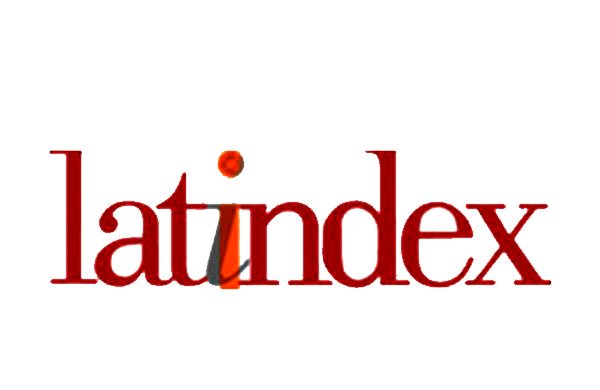In vitro analysis of melanoma cell proliferation subjected to high doses of vitamin D
Análise in vitro da proliferação de células de melanoma submetidas à altas doses de vitamina D
DOI:
https://doi.org/10.17765/2176-9206.2025v18e12972Keywords:
Melanoma, Raios Ultravioleta, Vitamina DAbstract
Skin cancer is one of the most common types of cancer worldwide, with rising incidence rates attributed to various risk factors, including ultraviolet radiation exposure. Vitamin D is a fat-soluble compound essential for maintaining bone health, supporting the immune system, and promoting cell growth. Vitamin D has also demonstrated anticancer properties due to its ability to inhibit neoplastic processes. This study aimed to investigate the effects of vitamin D on the proliferation and apoptosis of melanoma cells. For this purpose, the B16F10 cell line was treated with different concentrations of vitamin D for 13 hours. Subsequently, cell viability was analyzed using the MTT assay. The concentration 10 times higher than the physiological level showed the most pronounced cytotoxic effect, followed by the concentrations of 20 and 1 times. Vitamin D overload led to a decrease in the viability of B16F10 cells..Downloads
References
Farré X, Blay N, Cortés B, Carreras A, Iraola-Guzmán S, de Cid R. Skin Phototype and Disease: A Comprehensive Genetic Approach to Pigmentary Traits Pleiotropy Using PRS in the GCAT Cohort. Genes. 2023; 14(1): 149. https://doi.org/10.3390/genes14010149.
Holm-Schou AS, Philipsen PA, Idorn LW, Thieden E, Wulf HC. Lifetime UVR Dose and Skin Cancer Risk, Determined by Their Common Relation to Solar Lentigines. Anticancer Research. 2020; 40(1): 557–564: https://doi.org/10.21873/anticanres.13985.
Jones OT, Ranmuthu CKI, Hall PN, Funston G, Walter FM. Recognising Skin Cancer in Primary Care. Advances in Therapy. 2020; 37(1):603–616. https://doi.org/10.1007/s12325-019-01130-1.
Parker ER. The influence of climate change on skin cancer incidence – A review of the evidence. International Journal of Women’s Dermatology. 2021; 7(1):17. https://doi.org/10.1016/j.ijwd.2020.07.003.
Ombra MN, Paliogiannis P, Doneddu V, Sini MC, Colombino M, Rozzo C, Stanganelli I, Tanda F, Cossu A, Palmieri G. Vitamin D status and risk for malignant cutaneous melanoma: recent advances. European Journal of Cancer Prevention. 2017; 26(6):532. https://doi.org/10.1097/CEJ.0000000000000334.
Tuckey RC, Cheng CYS, Slominski AT. The serum vitamin D metabolome: What we know and what is still to discover. The Journal of steroid biochemistry and molecular biology. 2019; 186(1):4. https://doi.org/10.1016/j.jsbmb.2018.09.003.
Trump DL, Deeb KK, Johnson CS. Vitamin D: considerations in the continued development as an agent for cancer prevention and therapy. Cancer Journal (Sudbury, Mass.). 2010; 16(1):1–9. https://doi.org/10.1097/PPO.0b013e3181c51ee6.
Brożyna AA, Hoffman RM, Slominski AT. Relevance of Vitamin D in Melanoma Development, Progression and Therapy. Anticancer research. 2020; 40(1): 473. https://doi.org/10.21873/anticanres.13976.
Ciążyńska M, Olejniczak-Staruch I, Sobolewska-Sztychny D, Narbutt J, Skibińska M, Lesiak A. Ultraviolet Radiation and Chronic Inflammation—Molecules and Mechanisms Involved in Skin Carcinogenesis: A Narrative Review. Life. 2021; 11(4): 326. https://doi.org/10.3390/life11040326. 2.
M. Deschasaux, J.C. Souberbielle, P. LatinoMartel, A. Sutton, N. Charnaux, N. Druesne-Pecollo, et al. A prospective study of plasma 25-hydroxyvitamin D concentration and prostate cancer risk. British Journal of Nutrition. 2016; 115(2): 305-314. https://doi.org/10.1017/S0007114515004353.
de Sousa Almeida-Filho B, De Luca Vespoli H, Pessoa EC, Machado M, Nahas-Neto J, Nahas EAP. Vitamin D deficiency is associated with poor breast cancer prognostic features in postmenopausal women. J Steroid Biochem Mol Biol. 2017; 174(1): 284-289. https://doi.org/ 10.1016/j.jsbmb.2017.10.009.
Lee JE, Li H, Chan AT, Hollis BW, Lee IM, Stampfer MJ, Wu K, Giovannucci E, Ma J. Circulating levels of vitamin D and colon and rectal cancer: the Physicians׳ Health Study and a meta-analysis of prospective studies. Cancer Prev Res (Phila). 2011; 4(5): 735-743. https://doi.org/10.1158/1940-6207.CAPR-10-0289.
Slominski AT, Brożyna AA, Skobowiat C, Zmijewski MA, Kim TK, Janjetovic Z, Oak AS, Jozwicki W, Jetten AM, Mason RS, Elmets C, Li W, Hoffman RM, Tuckey RC. On the role of classical and novel forms of vitamin d in melanoma progression and management. The Journal of steroid biochemistry and molecular biology. 2018; 177:159-170. https://doi.org/10.1016/j.jsbmb.2017.06.013.
Muralidhar S, Filia A, Nsengimana J, Poźniak J, O'Shea SJ, Diaz JM, Harland M, Randerson-Moor JA, Reichrath J, Laye JP, van der Weyden L, Adams DJ, Bishop DT, Newton-Bishop J. Vitamin D-VDR Signaling Inhibits Wnt/β-Catenin-Mediated Melanoma Progression and Promotes Antitumor Immunity. Cancer Res. 2019; 79(23):5986-5998. https://doi.org/10.1158/0008-5472.
Muralidhar S, Filia A, Nsengimana J, Poźniak J, O'Shea SJ, Diaz JM, et al. Vitamin D and its low calcemic analogs modulate the anticancer properties of cisplatin and dacarbazine in the human melanoma A375 cell line. Int J Oncol. 2019; 54(4):1481-1495. https://doi.org/10.3892/ijo.2019.4725.
Piotrowska A, Wierzbicka J, Rybarczyk A, Tuckey RC, Slominski AT, Żmijewski MA. Vitamin D and its low calcemic analogs modulate the anticancer properties of cisplatin and dacarbazine in the human melanoma A375 cell line. Int J Oncol. 2019;54(4):1481-1495. doi:10.3892/ijo.2019.4725
Warren MF, Livingston KA. Implications of Vitamin D Research in Chickens can Advance Human Nutrition and Perspectives for the Future. Curr Dev Nutr. 2021 Feb 25;5(5): nzab018. https://doi.org/10.1093/cdn/nzab018.
Wiśniewska A, Szypowska A. The role of vitamin D in selected autoimmune diseases. Rocz Panstw Zakl Hig. 2021; 72(2):111-121. https://doi.org/10.32394/rpzh.2021.0156.
O'Shea SJ, Davies JR, Newton-Bishop JA. Vitamin D, vitamin A, the primary melanoma transcriptome and survival. Br J Dermatol. 2016; 175(2):30-34. https://doi.org/10.1111/bjd.14919.
Karatayli E, Stokes CS, Lammert F. Vitamin D in Preclinical Models of Fatty Liver Disease. Anticancer Res. 2020; 40(1):527-534. https://doi.org/10.21873/anticanres.13981.
Kim H, Giovannucci E. Vitamin D Status and Cancer Incidence, Survival, and Mortality. Adv Exp Med Biol. 2020; 1268:39-52. https://doi.org/10.1007/978-3-030-46227-7_3.
Olabiyi A, Passos DF, Silva JG, Schetinger M, Leal D. Role of purinergic system and vitamin D in the anti-cancer immune response. Life Sciences. 2021; 287:120110. https://doi.org/10.1016/j.lfs.2021.120110.
Colston KW, Perks CM, Xie SP, Holly JM. Growth inhibition of both MCF-7 and Hs578T human breast cancer cell lines by vitamin D analogues is associated with increased expression of insulin-like growth factor binding protein-3. J Mol Endocrinol. 1998 20(1):157-62. https://doi.org/10.1677/jme.0.0200157.
Zhou X, Yang Y, Ma P, Wang N, Yang D, Tu Q, Sun B, Xiang T, Zhao X, Hou Z, Fang X. TRIM44 is indispensable for glioma cell proliferation and cell cycle progression through AKT/p21/p27 signaling pathway. J Neurooncol. 2019; 145(2):211-222. https://doi.org/10.1007/s11060-019-03301-0.
Liu X, Zhang Y, Zheng P, Cui N. Msi1 inhibits cervical cancer cell apoptosis by downregulating BAK through AKT signaling. J Cancer. 2021;12(8):2422-2429. https://doi.org/10.7150/jca.52950.
Deng, J., Gutiérrez, L.G., Stoll, G. et al. Paradoxical implication of BAX/BAK in the persistence of tetraploid cells. Cell Death Dis. 2021; 12: 1039. https://doi:10.1038/s41419-021-04321-3
Wang L, Zhou S, Guo B. Vitamin D Suppresses Ovarian Cancer Growth and Invasion by Targeting Long Non-Coding RNA CCAT2. Int J Mol Sci. 2020; 21(7):2334. https://doi.org/10.3390/ijms21072334.
Posa F, Di Benedetto A, Cavalcanti-Adam EA, Colaianni G, Porro C, Trotta T, Brunetti G, Lo Muzio L, Grano M, Mori G. Vitamin D Promotes MSC Osteogenic Differentiation Stimulating Cell Adhesion and αVβ3 Expression. Stem Cells Int. 2018; 28:6958713. https://doi.org/10.1155/2018/6958713.
Xu S, Song J, Zhang ZH, Fu L, Gao L, Xie DD, Yu DX, Xu DX, Sun GP. The Vitamin D status is associated with serum C-reactive protein and adhesion molecules in patients with renal cell carcinoma. Sci Rep. 2019; 9(1):16719. https://doi.org/10.1038/s41598-019-53395-9.
Kelder C, Hogervorst JMA, Wismeijer D, Kleverlaan CJ, de Vries TJ, Bakker AD. Burst, Short, and Sustained Vitamin D3 Applications Differentially Affect Osteogenic Differentiation of Human Adipose Stem Cells. Int J Mol Sci. 2020; 21(9):3202. https://doi.org/10.3390/ijms21093202.
Sutedja EK, Arianto TR, Lesmana R, Suwarsa O, Setiabudiawan B. The Chemoprotective Role of Vitamin D in Skin Cancer: A Systematic Review. Cancer Manag Res. 2022; 14:3551-3565. https://doi.org/10.2147/CMAR.S389591.
Hussein H. Effects of Vitamin D on Growth Inhibition of Head and Neck Squamous Cell Carcinoma. (In vitro study). Al-Azhar Dental Journal for Girls. 2017; 4, (4):381–384. https://doi.org/10.21608/adjg.2017.5285.
Li Q, Li Y, Jiang H, Xiao Z, Wu X, Zhang H, et al. Vitamin D suppressed gastric cancer cell growth through downregulating CD44 expression in vitro and in vivo. Nutrition. 2021; 91-92:111413. https://doi.org/10.1016/j.nut.2021.111413.
Diesing, D. et al. Vitamin D – Metabolism in the Human Breast Cancer Cell Line MCF-7. Anticancer research, 2006. https://doi.org/pubmed.ncbi.nlm.nih.gov/16886688/.
Negri M, Gentile A, de Angelis C, Montò T, Patalano R, Colao A, Pivonello R, Pivonello C. Vitamin D-Induced Molecular Mechanisms to Potentiate Cancer Therapy and to Reverse Drug-Resistance in Cancer Cells. Nutrients. 2020 Jun 17;12(6):1798. https://doi: 10.3390/nu12061798.
Maj E, Filip-Psurska B, Milczarek M, Psurski M, Kutner A, Wietrzyk J. Vitamin D derivatives potentiate the anticancer and anti-angiogenic activity of tyrosine kinase inhibitors in combination with cytostatic drugs in an A549 non-small cell lung cancer model. Int J Oncol. 2018; 52(2):337-366. https://doi.org/10.3892/ijo.2017.4228.
Alizadeh-Navaei R, Saeedi M, Janbabaei G, Asgarian-Omran H, Kelidari H, Ahmadi-Ahangar M, et al. Role of vitamin D in the effectiveness of chemotherapeutic drugs on gastric cancer cell lines. World Cancer Research Journal. 2019; 6: e1259. https://doi.org/10.32113/wcrj_20194_1259.
Downloads
Published
How to Cite
Issue
Section
License
Copyright (c) 2025 Saúde e Pesquisa

This work is licensed under a Creative Commons Attribution 4.0 International License.
A submissão de originais para a revista Saúde e Pesquisa implica na transferência da Carta Concessão de Direitos Autorais, pelos autores, dos direitos de publicação digital para a revista após serem informados do aceite de publicação.A Secretaria Editorial irá fornecer da um modelo de Carta de Concessão de Direitos Autorais, indicando o cumprimento integral de princípios éticos e legislação específica. Os direitos autorais dos artigos publicados nesta revista são de direito do autor, com direitos da revista sobre a primeira publicação. Os autores somente poderão utilizar os mesmos resultados em outras publicações, indicando claramente a revista Saúde e Pesquisa como o meio da publicação original. Em virtude de tratar-se de um periódico de acesso aberto, é permitido o uso gratuito dos artigos, principalmente em aplicações educacionais e científicas, desde que citada a fonte. A Saúde e Pesquisa adota a licença Creative Commons Attribution 4.0 International.
A revista se reserva o direito de efetuar, nos originais, alterações de ordem normativa, ortográfica e gramatical, com vistas a manter o padrão culto da língua e a credibilidade do veículo. Respeitará, no entanto, o estilo de escrever dos autores. Alterações, correções ou sugestões de ordem conceitual serão encaminhadas aos autores, quando necessário. Nesses casos, os artigos, depois de adequados, deverão ser submetidos a nova apreciação. As opiniões emitidas pelos autores dos artigos são de sua exclusiva responsabilidade.

















